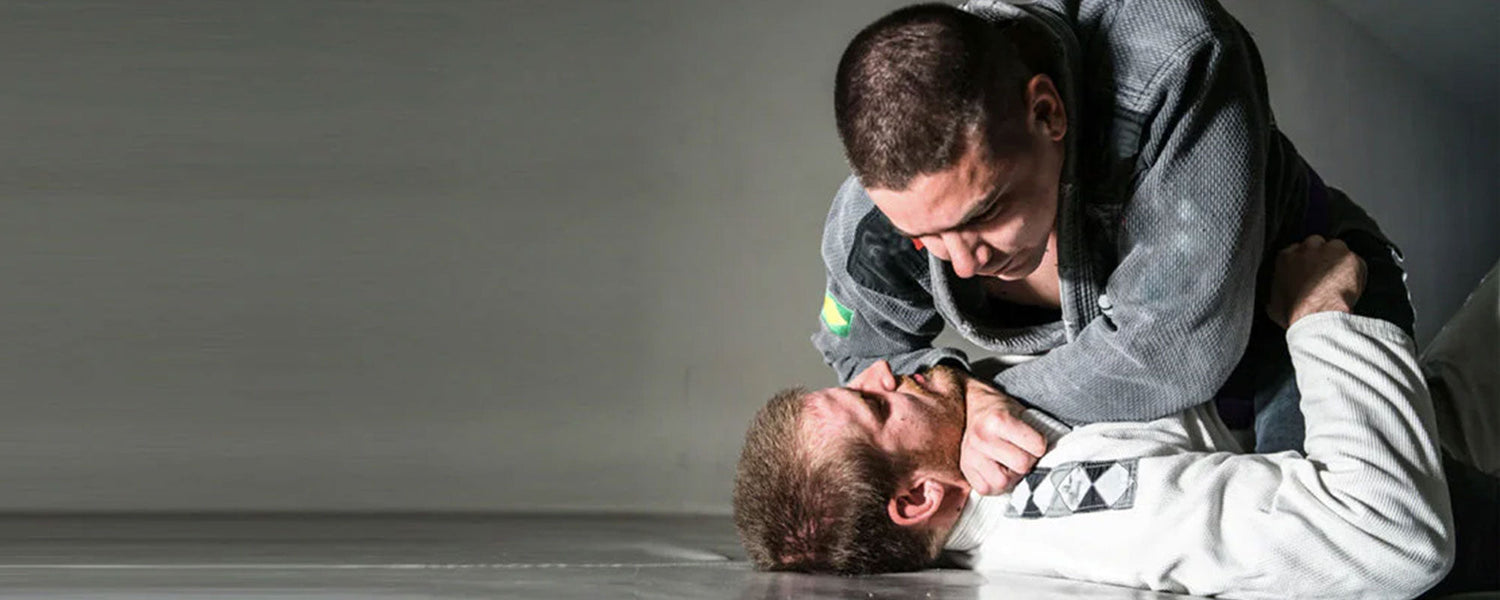Table of content
The Cross Collar Choke is one of the very first chokes that you will be taught in any BJJ academy. Usually, before getting done with learning mount or guard, this is one of the best moves taught to newbies to the sport. The cross-collar choke is particular to the GI as it involves collar grips and is used to cut off the blood from the carotid arteries. It works well against beginners who don’t know how to defend with their hands. However, as soon as people start to know more about this BJJ Gi technique, it gets hard to get your hands deep enough.
1. Cross Collar Choke Mechanics
The cross-collar choke, irrespective of the position, squeezes the blood supply to the head using the radial bone and ulna to get the choke. However, apart from restricting the blood supply to the head, it may also stimulate the vagus nerve to slow down the heart, creating a dual whammy effect of lessening the supply of oxygen to the head. This is what makes it very hard for some people that they won’t even get a chance to tap out when they get caught in a cross-collar choke.
2. Cross-Collar Choke Variations
The Cross Collar Choke is also called the X-Choke because it is executed by gripping the opponent's opposite lapel with your hand, creating an "X" with your arm and wrists. Normally, X-Choke is performed in two variations, including a position in full mount or closed guard. However, recently, cross-choke has seen many variations. One of them was performed by Leandro Lo and Romulo Barral, who made submissions with the cross choke from the knee slide guard pass.
2.1. How to perform the cross-collar choke from Mount
One of the most difficult spots to finish X-Choke is from the mount. You will have to bear in mind that the opponent will try to bridge and try to buckle you off. You have to pay proper focus on mount position, weight distribution, balance, defeating your rival’s neck protection, properly taking a grip on the lapel, and finally applying the finish.
Roger Gracie, a BJJ pro fighter, has one of the highest numbers of cross-collar chokes from the mount. He first set things up by getting heavy on the opponent’s hip, needing both his hands to prevent the rival from doing a reversal. Next, he chooses one side to sink his first grip by moving his head to that side. He does this to become heavy on one side so that he can remove one grip without getting reversed. Once done with the first grip, the next thing is to get the second grip without going to a closed guard. Getting the second grip from the mount is just as tricky as getting the second grip when playing closed guard. But a good way to get a second grip with your palm down is to cut your opponent to look at the other side.
2.2. How to do the cross-collar choke from a guard
It is very important to break the posture of your opponent and set up the cross-collar choke from a closed guard. To do this, you will need to actively fight for the grips to deter the opponent from regaining an upright posture from closed guard. It is important to get the first grip tight with four fingers inside the collar and your thumb to be at the back of your opponent's head. By doing this, the radical bone will be in contact with your opponent’s neck.
Getting the second grip from the guard is not as simple as it may sound. There are a couple of variations on how to finish the choke. The basic way is by taking your other hand, palm down, and grabbing the material somewhere around your opponent's shoulder to finish.
2.3. How to do the cross-collar choke from the Knee Slice
One more new technique to perform a cross-collar choke is with a knee slice. It is very common for opponents to squeeze your leg to prevent the pass. Also, your opponent will most likely face you on his or her side. As soon as they turn to their side, you can instantly get the first choking hand. Once you are successful with the first choke, the second choke will become easy for you. If you want a quick finish, you can also shave and squeeze. However, the better way is to kneel on your posting leg and crunch.
3. Defending the Cross-Collar Choke
A cross-collar choke is an important move that is considered a basic attack. There are plenty of ways to defend this choke. However, it involves a lot of complexities, and mastering the choke is not an easy thing. Having said that, one technique to defend this is with the punch. This is exclusive to top positions, as it includes posturing up. The idea is to punch the throat of your opponent when he begins the choke. Punching the throat doesn’t mean to punch hard, but applying some force to the throat of the opponent to fend off the attack.
From the bottom mount, the technique used to defend the x-choke is "bridge and roll." However, this may not always work against good competitors. The idea is to trap the gripping arm with an over hook when the opponent tries for the first grip. The next step is to create a strong bridge toward the trapped arm. This will give the attacker's arm no room on that side, and you can reverse the position into a top closed guard. The problem with this defense is that an experienced player will know the counter. Nevertheless, the escape can work and is better than nothing.
4. Conclusion
Overall, these are good options to have from the top and bottom positions and are worth learning for defensive and attack positions. By studying the mechanics and practicing the steps of submission, anyone can master the cross-collar choke technique naturally.
Photo Credit: bjjreport









Leave a comment
This site is protected by hCaptcha and the hCaptcha Privacy Policy and Terms of Service apply.